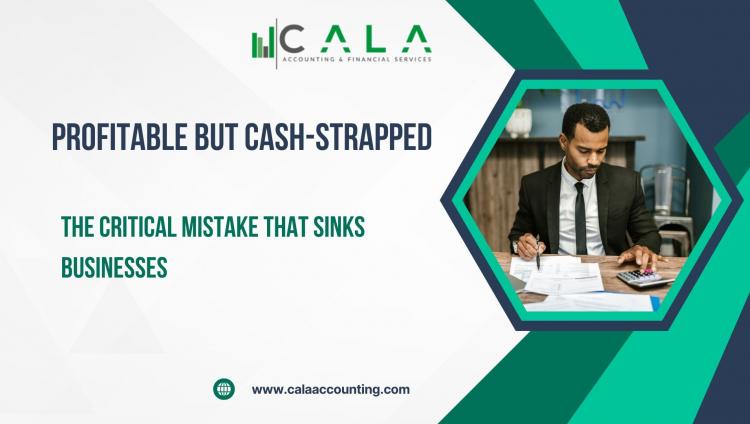EL SECRETO DE LAS EMPRESAS EXITOSAS: EXTERNALIZA TU CONTABILIDAD Y ENFÓCATE EN CRECER

In the day-to-day operations of a business, it’s common for business owners and general managers to make decisions based on the net profit shown in their financial statements.
“If we’re making money, everything is fine,” they think. But many find out—sometimes too late—that their company may appear profitable on paper, yet lack the cash to pay suppliers, payroll, or taxes.
That gap between what you earn and what you actually have in the bank can mean the difference between a thriving business and one on the brink of collapse.
At Cala Accounting, we’ve helped dozens of business owners identify and close this dangerous gap. Here’s what you need to know:
Profitability refers to a company's ability to generate earnings after covering its costs and expenses. It answers the question: Is my business economically viable?
This is reflected in the Income Statement (also known as the Profit & Loss Statement) and includes revenue, costs, operating expenses, depreciation, and amortization.
But here’s the catch: Being profitable does not mean having available cash. That profit may be tied up in accounts receivable, inventory, or fixed assets.
Cash flow is the real movement of money in and out of your business. It is tracked through the Cash Flow Statement and shows whether the business has enough liquid resources to meet its immediate obligations.
A company may have strong sales and show profits, but if it doesn’t collect payments on time or faces heavy short-term expenses, it can quickly run out of cash. And without cash, you can’t pay payroll, suppliers, rent, or taxes.
Many businesses hire staff, acquire assets, or expand operations under the false assumption that profitability means cash availability. Then they realize too late that they lack the liquidity to meet their commitments—often with serious consequences, including bankruptcy.
The Tax Authority and the Municipality don’t wait for you to collect your invoices. If there’s no cash to cover tax obligations, expect penalties, interest, and legal risk.
Understanding the difference between profitability and cash flow—and how to balance the two—is essential for sustainable growth. Here are some practical tips:
Don’t just monitor your profits—review your weekly or monthly cash flow. Forecast when money will come in and go out. A cash budget is just as vital as your sales plan.
Sales are important—but so is collecting on time. Avoid offering credit without clear policies. Set up payment reminders, apply late fees, and follow up consistently.
Not all expenses need to be paid immediately. Separate essential expenses (like salaries, key suppliers, and taxes) from those that can be deferred. This helps maintain healthy profitability and efficient cash flow.
Calculate your taxes based on realistic income projections and set aside cash in advance to meet those obligations.
A common mistake is failing to account for the tax impact of sales that have not yet been collected.
Before investing, opening new branches, or hiring staff, assess whether your cash flow can support the expansion. Future profits won’t cover today’s cash shortages.
A profitable business is not always a healthy business.
Sustainability comes from understanding the difference between what you earn and what you can actually spend.
At Cala Accounting, we help businesses look beyond accounting results. We apply financial analysis and tax planning so you can make strategic decisions—grounded in long-term vision and daily operational reality.
Is your company profitable but cash feels tight? It’s time to review your cash flow. Contact us—we’re here to help you grow.
Comprometidos con su tranquilidad fiscal y financiera